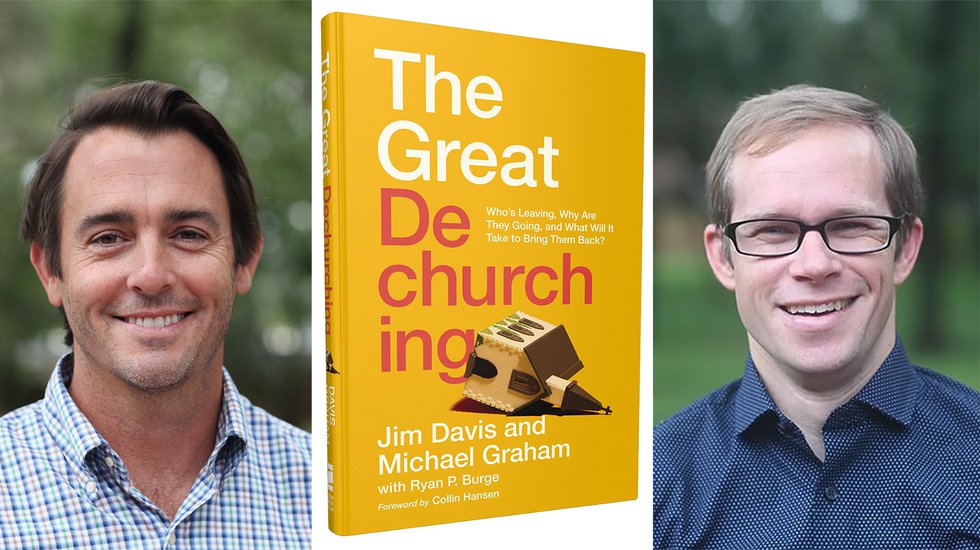The Great Dechurching – A Book Review
- Candyce Carden

- Nov 15, 2023
- 4 min read

by Candyce Carden
Chances are, you’ve noticed a drop-off in church attendance over the past twenty years or so. I certainly have. And it’s concerning. What is going on? The newly published book, The Great Dechurching – Who’s Leaving, Why Are They Going, and What Will It Take to Bring Them Back? responds to this question.
Jim Davis and Michael Graham spent months collecting and examining data regarding the exodus from American churches. The Great Dechurching – Who’s Leaving, Why Are They Going, and What Will It Take to Bring Them Back? is the result of their work.
The researchers discovered that “America is in the midst of the largest and fastest religious shift ever.” Evidence shows that millions of former regular church goers have decided they don’t want to attend church anymore. Davis and Graham refer to them as the “dechurched.”
The book documents some startling facts. For the first time in the eight decades that Gallup has tracked American religious membership, more adults in the United States don’t attend church than attend church. That totals about 40 million adults in all. The authors project the number of the dechurched will soon exceed the number of the unchurched, those who never attended church at all.
Over the past 25 year more people have left the church than all the new people who became Christians from the First Great Awakening, Second Great Awakening, and the Billy Graham crusades combined.
The authors point to three contributing factors during this timeframe:
The Cold War
The fallout from an increasingly polarized Religious Right
The influence of the Internet
Davis and Graham detail the evidence and rationale behind these three factors and assert that the “erosion of the religious foundation…will have widespread reverberations. The greatest concern is that many fewer people will have the opportunity to organically hear the gospel in local churches on a given Sunday morning.”
Disheartening words to be sure, but keep reading. The study also offers hope.
Profiles of the Dechurched
The data revealed the dechurched consists of five main categories. Each group is briefly introduced below.
Group 1: Cultural Christians
Cultural Christians represent 52 percent of dechurched evangelicals. Church was a priority in their families as they grew up. Yet, this group has the lowest understanding of Christian doctrine. Few show evidence of actually being believers. The reasons provided for church non-attendance varied widely, but most of them stopped practicing their faith from age 18-25.
There’s good news here, however. Over 50 percent of cultural Christians are open to a return to church.
Group 2: Dechurched Mainstream Evangelicals
This group, unlike cultural Christians, has a deep understanding of doctrine. They are believers. The pandemic accelerated the rate of their departure from church. The main reasons cited for leaving was a geographical move, a change in family dynamics (divorce or kids leaving home), and Covid-19 broke the habit.
A high amount of hope exists for this group. The study revealed that a whopping 100 percent of them are actively willing to return to church.
Group 3: Exvangelicals
Exvangelicals have purposely exited the church and aren’t likely to return. Ironically, the majority of them still identify as Christian, affirming they embrace key doctrinal questions. Many experienced a traumatic event in which they were harmed by a member of the church staff or a member of the congregation. Others sought council and support from the church during a challenging time and didn’t receive it.
A heartbreaking statistic shows the group as the most likely to “look to myself for answers on life’s issues.” Unsurprisingly, they rank the highest in suicidal thoughts.
Group 4: BIPOC (black, indigenous, and people of color)
Intelligent and highly informed, this group has low trust in American institutions in general (government, education, health, judicial, etc).
They question their faith and don’t believe basic principles of Christian theology. They left church primarily because they struggled to fit in or belong, had other priorities, found community online or through work.
The good news is 65 percent of BIPOC are willing to return to an evangelical church to make new friends, ward off loneliness, and if a child wanted to attend.
Group 5: Dechurched Mainline Protestant and Catholic
These two groups are remarkably alike in demographics and beliefs. They cite similar reasons for leaving, including a move to a new community, shifting priorities for time and money, not fitting in, and disagreeing with the politics of the congregation.
The main reason this group would return to church is because they want to do good in the world. They want to contribute, to give back. Might they find a way to do that in your church?
The Great Dechurching is a fascinating read and uncovers more than I’m able to share here. It’s enlightening, troubling, and sobering at the same thing. Thankfully, the news is not all dire.
A path back to church exists for the dechurched. We must help them find it. In some cases, all it takes is an invitation. But more likely, we have to do more. We will have to practice patience and acceptance while loving on the dechurched as Jesus loves on us. And we may need to change some church practices to better meet their needs.
It’s definitely worth a conversation.
I’d like to thank church pastor Jonathan Barlow of FBCdalton for preaching a 3-part sermon based on this book. I bought it as soon as I learned of it.
Interested in knowing more? Order your copy here: The Great Dechurching-Who’s Leaving, Why Are They Going, and What Will It Take to Bring Them Back? ***
***I will pass along my book to the first person to request it in the comments.
As always, thanks for reading. Wishing you a Thanksgiving filled with family, praise, and love. And some good food! Candyce




Comments